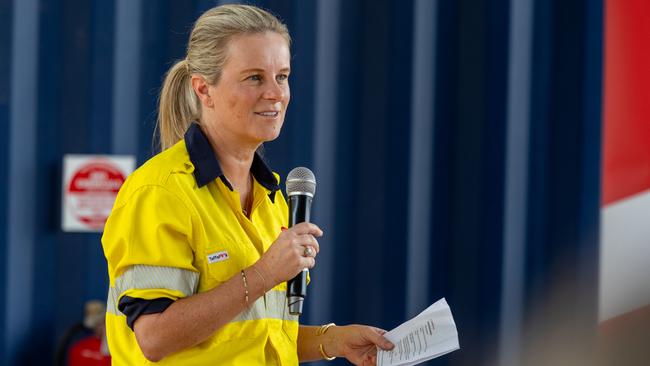Beetaloo gas is a viable option to avoid eastern seaboard shortage, says APA Group
The eastern seaboard faces a looming gas shortfall and developing resources in the Beetaloo Basin would be contentious, but a senior APA executive says it is a viable solution.
Developing gas reserves in the Beetaloo is a potential solution to mitigating the east coast’s looming shortfall and it should be considered, a senior executive at APA Group says.
The comments illustrate potentially contentious choices policymakers will need to make to offset a shortfall of gas primarily in Victoria and NSW that threatens to be economically catastrophic.
However, developing gas reserves in the Beetaloo would be contentious. It threatens to inflame tensions with Indigenous groups, which insist the land is culturally sensitive and must be preserved.
APA group executive of operations Petrea Bradford said Australia would need to act on addressing the gas shortfall if it wanted to decarbonise.
“We know that gas is needed in the southern markets. We know there are resources that can deliver on that outcome to market,” Ms Bradford said.
“We know to decarbonise Australia, we need gas to be there.
“The Beetaloo in particular provides an opportunity to assist and support in that transition.”

Empire Energy and Tamboran Resources, two junior resources companies, are leading work to develop a gas industry in the Northern Territory after the former territory government permitted franking in a bid to unlock the lucrative sector, but the move has attracted opposition.
APA has partnered with Tamboran and Empire to scope a potential pipeline that if developed would bring gas into the eastern markets.
APA’s positioning in the Beetaloo has caused shareholder unrest, with some investors criticising the company at its recent annual general meeting.
But while socially contentious, developing the gas in the Beetaloo has more policymaker support. The NT government has thrown its weight behind the project, in contrast to the Narrabri development in NSW that has received only tepid support from the state Labor government.
Australia faces a race against time to mitigate the impact of a gas shortfall. The Australian Energy Market Operator has warned that gas power stations may need to turn to burning diesel as soon as 2026 as supplies tighten. Even with mitigation steps, the dominant supplier of gas to the region – ExxonMobil and Woodside’s Bass Strait Longford facility – will have been depleted by 2028.
Gas industry executives hope the call for action spurs authorities to approve new supplies and inhibit the capacity of opponents to block new developments.
But expansion plans of Senex Energy, backed by Gina Rinehart and South Korean steel giant POSCO, remains the largest of a small number of developments given the green light – which energy officials have widely condemned.
The federal government insists it supports and values the role of gas, but critics say regulatory delays are indicative of its commitment to bolstering new supplies. Gas remains polarising and pockets of the electorate are deeply opposed to new developments. Critics of the government believe Anthony Albanese is unwilling to alienate a key voter bloc ahead of an election due next year.
Industry figures have warned postponing the decision leaves Australia badly exposed to supply disruptions, with little time to bring new supplies to market before supplies tighten. Without adequate gas supplies, traditional users – such as manufacturers that are unable to switch to renewables, and households in Victoria, face increased bills. Manufacturers have warned the viability of some industries will be at risk if bills were to rise.
Households with gas will also be stung in their electricity bills under a supply crunch. Gas is used in Australia as a peaker. During periods of high demand for electricity or when renewable energy supplies are curtailed during to unfavourable weather, gas is used for electricity generation.
Without enough supplies of gas, electricity generation would struggle to meet demand and prices would rise.
These increases in bills felt by consumers are unlikely to be seen by 2026 at the earliest, but Australia can ill afford a spike in utility bills.
Energy bills were a key driver in inflation surging amid a global energy crunch, which forced the Reserve Bank to lift interest rates 13 times.
The ensuing cost-of-living crisis has seen a record number of people struggle to pay their electricity bills, which has sapped support for the federal government.





To join the conversation, please log in. Don't have an account? Register
Join the conversation, you are commenting as Logout